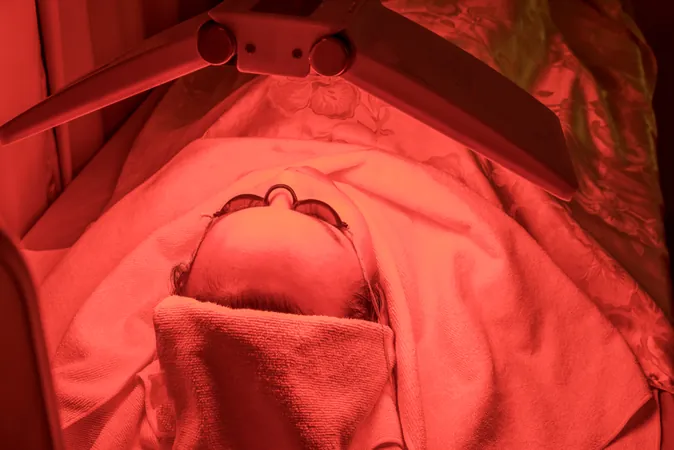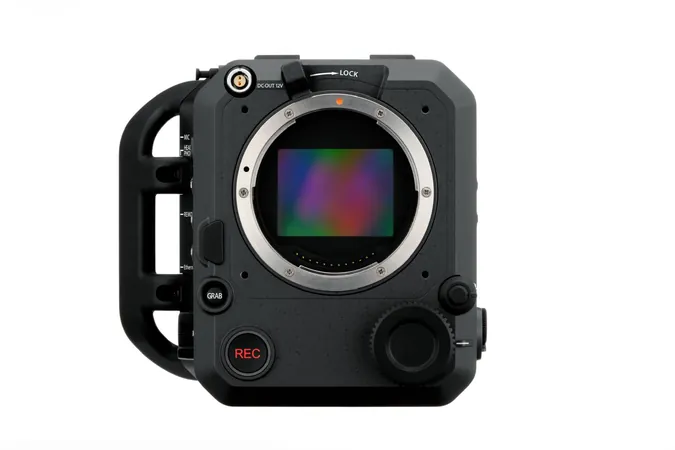
Revolutionary Photodisinfection Technology Could Save Millions from AMR-Related Deaths
2024-11-04
Author: Olivia
Introduction
As antimicrobial resistance (AMR) continues to escalate and traditional antibiotic treatments face daunting challenges, leading experts are urgently advocating for the global adoption of photodisinfection technology.
Dr. Colin Hopper, a prominent advocate for photodynamic therapy and president of the International Photodynamic Association (IPA), emphasizes the need for this innovative infection control method to be recognized and widely implemented. He asserts that photodisinfection could significantly reduce deaths linked to AMR by offering an effective alternative to dwindling antibiotic options.
“We are relying on outdated solutions while the threats we face are evolving,” says Dr. Hopper. “If we invest in and adopt photodisinfection, we have the chance to fundamentally change the landscape of infection treatment.”
What is Antimicrobial Resistance?
AMR occurs when bacteria, fungi, viruses, or parasites develop the ability to withstand drugs that once eliminated them. The rise of AMR is largely due to the overuse and misuse of antibiotics in medicine, agriculture, and animal husbandry. Consequently, diseases that were once easily treatable are now becoming deadly. The Global Research on Antimicrobial Resistance (GRAM) Project projects that by 2050, resistant infections could lead to as many as 8 million deaths each year, underscoring AMR as a pressing global health crisis.
Photodisinfection: A Game-Changer in Infection Control
Photodisinfection, sometimes referred to as photodynamic therapy, is an innovative light-activated treatment developed in the 1990s at University College London. Instead of using traditional antibiotics, photodisinfection employs light-sensitive compounds known as photosensitisers. Upon exposure to specific wavelengths of light, these compounds produce reactive oxygen species that efficiently kill bacteria, fungi, and viruses, demonstrating a swift and broad-spectrum bactericidal effect.
One of the most significant advantages of photodisinfection is that the rapidity of its action prevents pathogens from developing resistance—a crucial advantage in combating AMR. Comprehensive studies carried out at renowned institutions such as the Wellman Center for Photomedicine at Massachusetts General Hospital and Harvard Medical School confirm the method’s effectiveness against a wide array of pathogens, including extremely drug-resistant strains that are often untreatable with current antimicrobial therapies.
Experts are now urging the healthcare sector to prioritize photodisinfection as both a complement to and potential replacement for traditional antimicrobials in specific scenarios.
Encouraging Results and Diverse Applications
Research indicates that photodisinfection is painless, straightforward to administer, and associated with negligible serious side effects, drawing on evidence from hundreds of thousands of applications. Healthcare facilities in Canada, the United Kingdom, and various European nations have successfully integrated this technology to mitigate hospital-acquired infections, particularly in the aftermath of surgeries.
Prominent NHS trusts in the UK, including the Leeds Teaching Hospitals and Guy's and St Thomas' NHS Foundation Trust, have incorporated photodisinfection into their infection control procedures. The benefits of this technology extend beyond hospital settings; it shows potential in treating infections related to burns, chronic sinusitis, ulcers, and oral health conditions.
During the COVID-19 pandemic, an intriguing study from the University of Navarra revealed that intranasal photodisinfection could boost viral clearance in mild COVID-19 cases, effectively reducing viral load and infectivity.
A Global Call for Action
With photodisinfection already approved in various regions, including the UK, Canada, Europe, and Australia, and Phase 3 FDA trials in progress in the United States, Dr. Hopper and the IPA are pressing for healthcare systems around the world to adopt this transformative technology.
As the global AMR crisis intensifies, experts assert that photodisinfection has the potential to redefine infection control practices and reinvigorate hope in the battle against drug-resistant infections. While it won’t entirely replace antibiotics, photodisinfection stands out as a formidable ally in safeguarding public health against the rising tide of antimicrobial resistance.









 Brasil (PT)
Brasil (PT)
 Canada (EN)
Canada (EN)
 Chile (ES)
Chile (ES)
 España (ES)
España (ES)
 France (FR)
France (FR)
 Hong Kong (EN)
Hong Kong (EN)
 Italia (IT)
Italia (IT)
 日本 (JA)
日本 (JA)
 Magyarország (HU)
Magyarország (HU)
 Norge (NO)
Norge (NO)
 Polska (PL)
Polska (PL)
 Schweiz (DE)
Schweiz (DE)
 Singapore (EN)
Singapore (EN)
 Sverige (SV)
Sverige (SV)
 Suomi (FI)
Suomi (FI)
 Türkiye (TR)
Türkiye (TR)